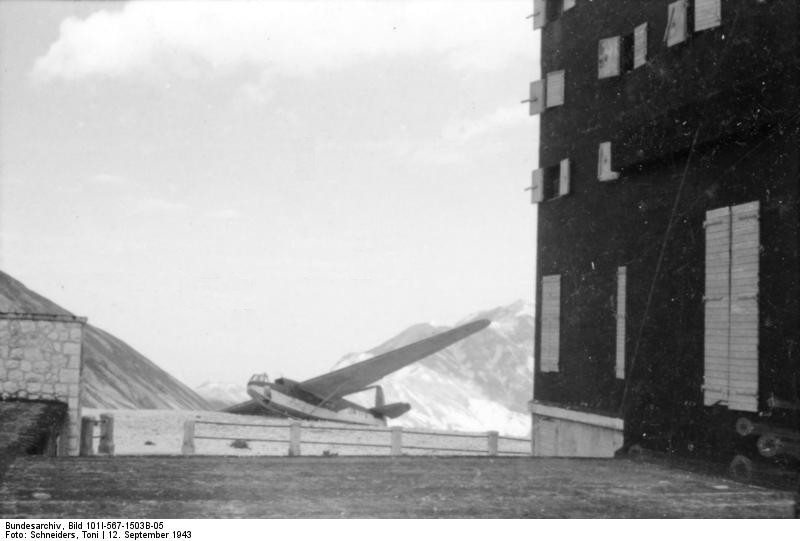WWII Commando Skorzeny: Simple Gliders As Stealth Weapons
 The fall of Stalingrad on February 2, 1943, meant that the German war machine was now on the defensive. Russia and America were too big, with too many military resources. Austrian officer Otto Skorzeny watched US forces climb up the Italian peninsula during July, orchestrating the arrest of the country’s leader Mussolini.
The fall of Stalingrad on February 2, 1943, meant that the German war machine was now on the defensive. Russia and America were too big, with too many military resources. Austrian officer Otto Skorzeny watched US forces climb up the Italian peninsula during July, orchestrating the arrest of the country’s leader Mussolini.
In charge of behind-enemy-lines Seals-type commandos, Skorzeny was asked to free the Italian Duce from captivity. His preparation meant careful planning and research, well-suited to this professional engineer. But the Reich’s dwindling resources had to be reckoned with. The words of his father came back to him: “There is no harm in doing without things. It might even be good for you not to get used to a soft life.”
Skorzeny finally located the captured Mussolini high up in the San Grasso mountains, in a newly built hotel (photo) accessible only by a lift. The story is told in his memoir Skorzeny’s Secret Missions (1950). Gliders were chosen as the stealth weapon of choice to quickly overcome the defenders in a surprise attack.
Backcountry resistance fighters have always known that riding horseback nullifies the expense and noise of military machines, and gliders are no different. With no engines, gliders are quiet–and can be cheaply assembled: “This glider of ours was indeed a rudimentary vehicle of transportation: a few steel tubes for a frame, a canvas envelope, and that was all.” Even pickup trucks can launch them, or they can be towed behind other aircraft, eventually released to fly silently toward their target.
The commando raid in September to rescue Mussolini worked well, today reminiscent of the precision US Navy Seals takedown of Osama Bin Laden.
You are invited to the Western Dakota Technical Institute in Rapid City on Saturday, June 14, as glider expert Charlie Summers, a much-decorated F-100 Super Sabre pilot in Vietnam, will share his knowledge of the role of gliders during World War II, starting at 9 am.
 The fall of Stalingrad on February 2, 1943, meant that the German war machine was now on the defensive. Russia and America were too big, with too many military resources. Austrian officer Otto Skorzeny watched US forces climb up the Italian peninsula during July, orchestrating the arrest of the country’s leader Mussolini.
The fall of Stalingrad on February 2, 1943, meant that the German war machine was now on the defensive. Russia and America were too big, with too many military resources. Austrian officer Otto Skorzeny watched US forces climb up the Italian peninsula during July, orchestrating the arrest of the country’s leader Mussolini.